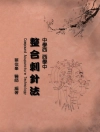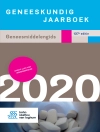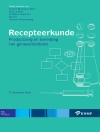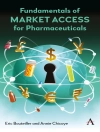Molecular modeling and simulation play a central role in academic and industrial research focused on physico-chemical properties and processes. The efforts carried out in this field have crystallized in a variety of models, simulation methods, and computational techniques that are examining the relationship between the structure, dynamics and functional role of biomolecules and their interactions. In particular, there has been a huge advance in the understanding of the molecular determinants that mediate the interaction between small compounds acting as ligands and their macromolecular targets. This book provides an updated description of the advances experienced in recent years in the field of molecular modeling and simulation of biomolecular recognition, with particular emphasis towards the development of efficient strategies in structure-based drug design.
Table des matières
Preface; recognition of ligands by macromolecular targets; thermodynamics of ligand binding; continuum solvation in biomolecular systems; bioavailability prediction at early drug discovery stages: in vitro assays and simple physicochemical rules; computational strategies in drug design; molecular descriptors for database mining; pharmacophore models in drug design; docking and virtual screening; binding free energy calculations and scoring in small-molecule docking; COMparative BINding Energy (COMBINE) analysis as a structure-based 3D-QSAR method; accounting for target flexibility during ligand-receptor docking; enhanced sampling methods in drug design; exploring diversity of drug target sites; expanding the target space: druggability assessment; computational strategies and challenges for targeting protein-protein interactions with small molecules; case studies; using molecular simulations and metadynamics to predict binding free energies and kinetics; the case of COX and CDK2; Computer-assisted design of drug-like synthetic libraries; index
A propos de l’auteur
F Javier Luque is a Professor at the Department of Physical Chemistry in the University of Barcelona, and leader of the Computational Biology and Drug design group at the Institute of Biomedicine. He received his BA degree in Chemistry from the Universitat Autonoma de Barcelona in 1985 and his Ph D in Chemistry from the Universitat Autonoma de Barcelona in 1989. He joined the Departament de Fisicoquimica in 1986, and was appointed Associate Professor in Physical Chemistry in 1992, and in 2003, he was promoted to the position of Full Professor. His research interests are the theoretical representation of chemical reactivity and the modeling of solvation effects, the simulation of biochemical systems, with particular emphasis in the dynamical description of the structure-function relationships in proteins, and in the interaction between ligand and macromolecular receptors, specially orientated to structure-based drug discovery.












